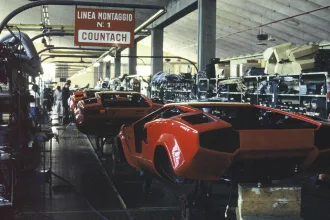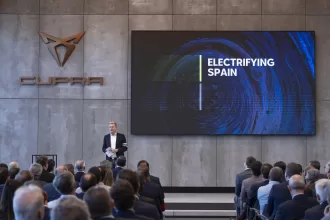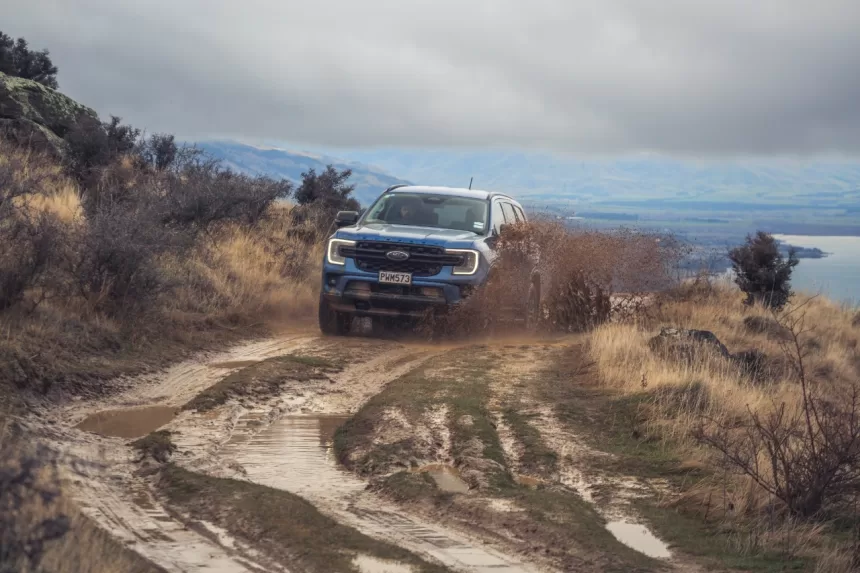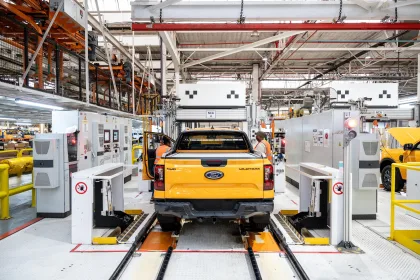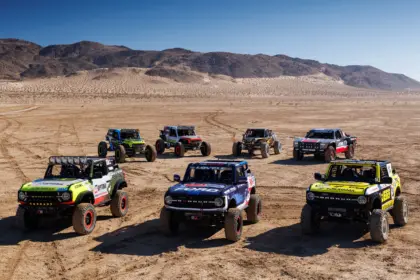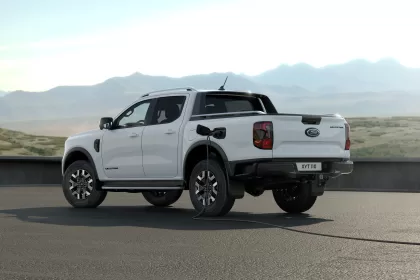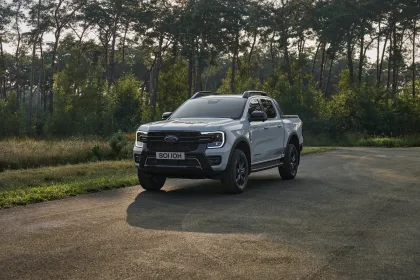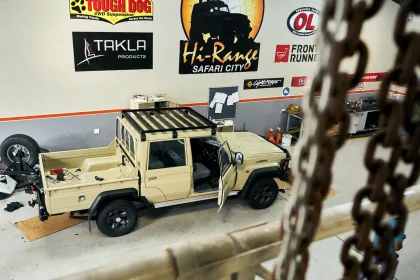The Ford Ranger and Everest have always been capable when the bitumen ran out. Now, they’re even better thanks to a raft of technologies including an expanded and enhanced suite of drive modes to support owners in their off-road adventures.
Previously, only Ranger Raptor and Everest were available with drive modes, but now Ranger boasts them too. “Ranger and Everest’s selectable drive modes have been developed to give customers a vehicle that flatters the novice and enhances the expert,” said David Grice, chief program engineer, Ford Ranger and Everest.
What it does
Each selectable drive mode adjusts a variety of electronic and mechanical settings within Ranger or Everest to tailor its performance and driving characteristics to on-road and off-road driving conditions. The system may alter steering feel and effort, traction control, stability control, chassis controls, powertrain response, transmission shift points, and four-wheel driveline setting, depending on the selected mode.
The system will revert to Normal mode each time it is switched off. When the vehicle is restarted, the system will display a prompt on the instrument cluster display that gives you the option of returning to the previously selected driving mode.
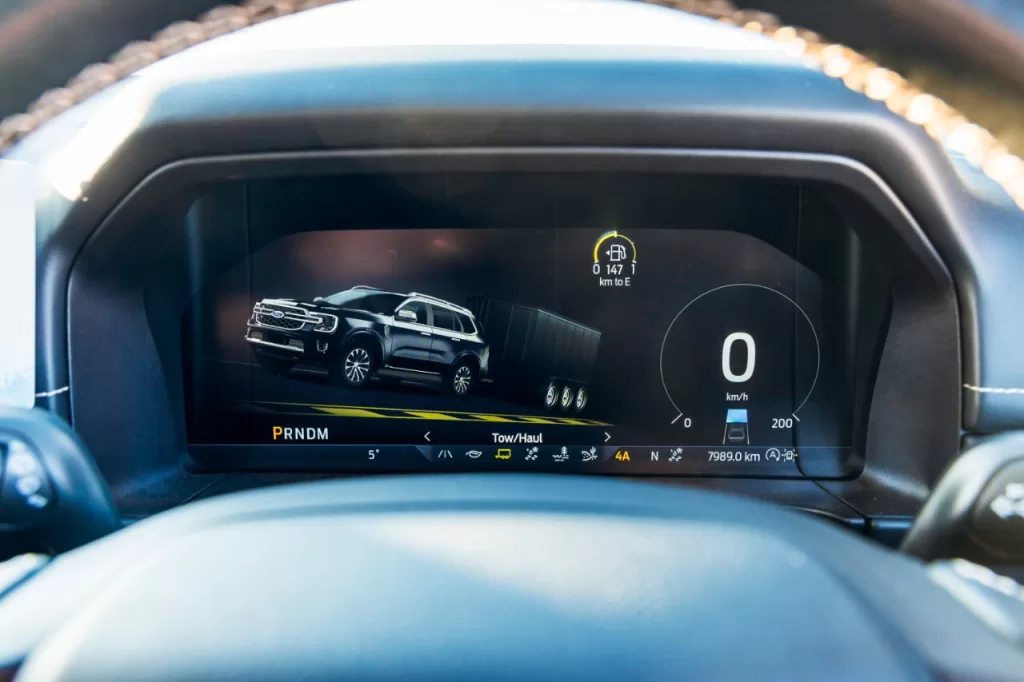
“With Ranger and Everest’s selectable drive modes owners have everything they need to tailor their vehicle to best suit the type of terrain they’re driving on, from on-road to off-road. We’ve a long, proud history at Ford of producing capable off-road vehicles and we’ve poured that knowledge and passion for overlanding into Ranger and Everest,” said Rob Hugo, vehicle experiences supervisor, Ford Australia.
Turn that dial
With the twist of a dial, Ranger and Everest owners can, depending on the model and variant, choose from up to seven drive modes designed to enhance on- and off-road comfort and capability. Depending on the market and variant, these drive modes are:
- Normal – Intended for everyday use and can be used on- and off-road in general driving conditions. It is Ranger and Everest’s default driving ‘state’ and defers to four-wheel drive automatic (4A) although all four-wheel drive modes and two-wheel drive high (2H) are available in Normal.
- Eco –This mode maximises fuel economy by reducing throttle sensitivity, upshifting gears earlier and adding a more economical cruise control tune. Default is 2H
- Tow/Haul –This mode is designed to be used when towing or carrying a heavy load and optimises gear shift timing to maintain power delivery and engine braking in hilly terrain, it also increases steering weight for improved control. Default is 4A.
- Slippery –For use on firm but slippery surfaces (snow and ice). The engine and transmission are optimised (early gear shifting) to reduce wheel spin with traction control optimised, reduced wheel slip via reduced engine power and longer duration for enhanced grip and control, the throttle response is reduced. Default is 4A.
- Mud/Ruts –For use only off-road in soft, muddy, rutted, or waterlogged tracks, this mode is designed to help maintain vehicle momentum but still allow for some wheel slip to assist in clearing mud from the tyre tread. When this mode is selected, the vehicle will shift into four-wheel drive high (4H) and lock the rear diff.
- Sand –Another off-road only mode designed to be used on both sand and deep snow and optimises gear shifts with lower gears held longer to help maintain momentum, similarly stability control intervention is reduced to ensure the vehicle can keep moving forward through soft, dry sand. When this mode is selected, the vehicle will shift into four-wheel drive high (4H) and lock the rear diff.
- Rock Crawl (exclusive to Ranger Wildtrak X) – Borrowed from Ranger Raptor, Rock Crawl mode is only available in four-wheel drive low range to provide maximum traction and slow speed performance. Throttle response softens to improve control and minimize speed changes on lumpy terrain. When this mode is selected, the vehicle will shift into four-wheel drive Low (4L) and lock the rear diff.
The selectable drive modes dovetail into the raft of other technologies designed to enhance capability, like the electronic rear differential lock which can be activated via the dedicated SYNC off-road screen, or hill descent control, or the integrated electric trailer brake controller, or front camera view (where fitted) with steering overlays which displays on the large-format infotainment screen.
“These selectable drive modes are a very simple way of getting advanced traction to the wheels the way it needs to be delivered without having to be an expert,” said Hugo.
| Selectable Drive Modes for Ford Ranger and Everest 4WD Variants | ||||
| Drive Mode | Brake System | Powertrain | Drive | Transfer Case & Rear Differential |
| Normal | Normal, tuned for road driving | Tuned for fuel economy, emissions, and drivability | 4A | Unlocked |
| Eco | Normal, tuned for road driving | Tuned for fuel economy, softer throttle progression, slower acceleration in cruise control | 2H | Unlocked |
| Tow/Haul | Normal, tuned for road driving | Tuned for heavy loads, holds gears longer, downshifts earlier, provides more engine braking, backout upshifts inhibited | 4A | Unlocked |
| Slippery | On low friction surfaces, the TCS is more sensitive to prevent wheelspin. FSC tighter to avoid sliding | Programmed for slower torque application with early upshifts | 4A | Unlocked |
| Mud/Ruts | TCS less sensitive to allow tread clearing. FSC relaxed to avoid unwelcome intervention | Holds gears longer to maintain torque and power | 4H | Locked |
| Sand | Tuned for soft sand. TCS less sensitive to allow some slip. FSC relaxed to avoid unwelcome intervention | Increased throttle response. Holds gears longer to maintain torque and power | 4H | Locked |
| Rock Crawl (Wildtrak X Only) | TCS active. FSC off | Reduced throttle response. Holds gears longer to maintain torque and power | 4L | Locked |



